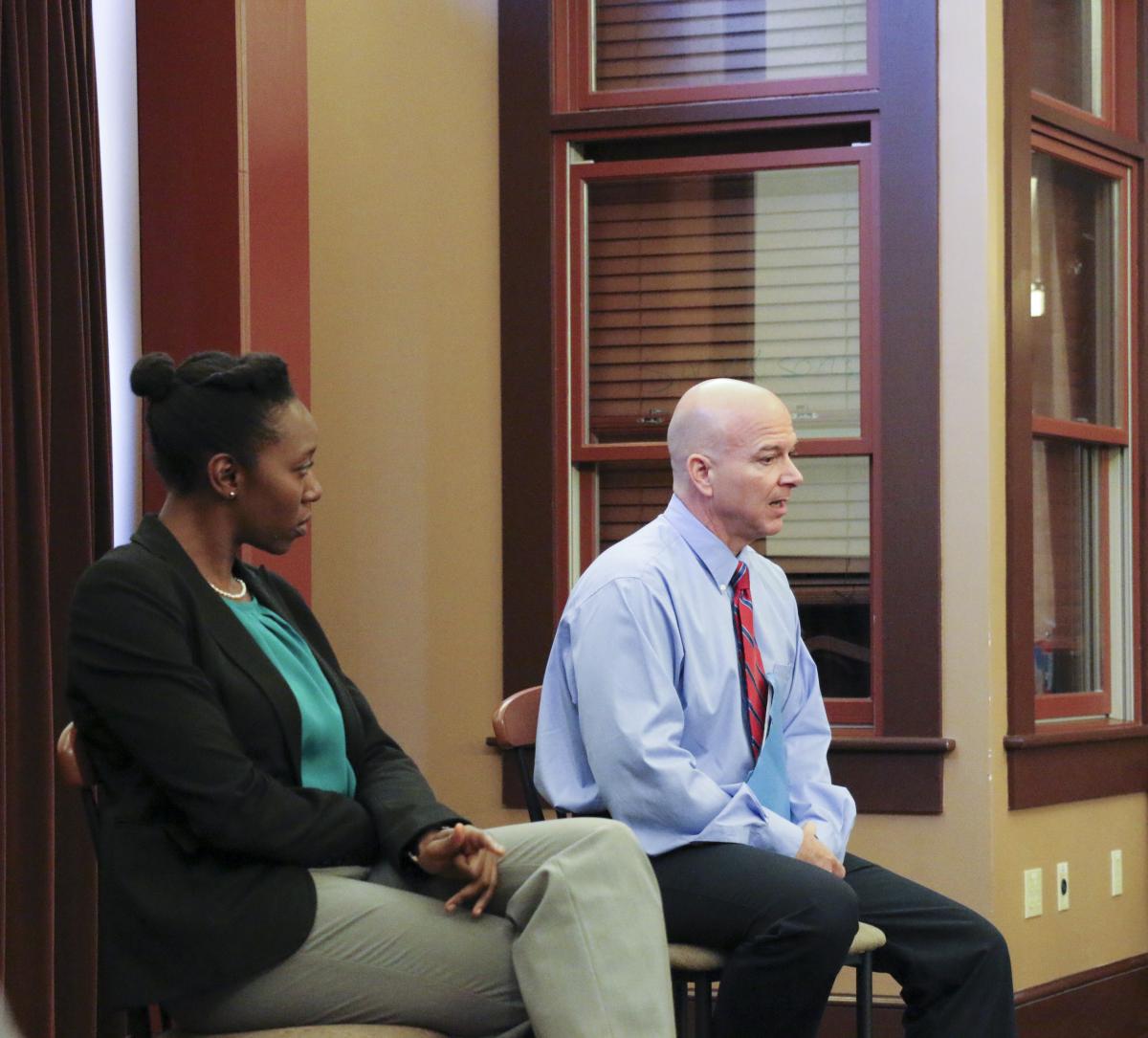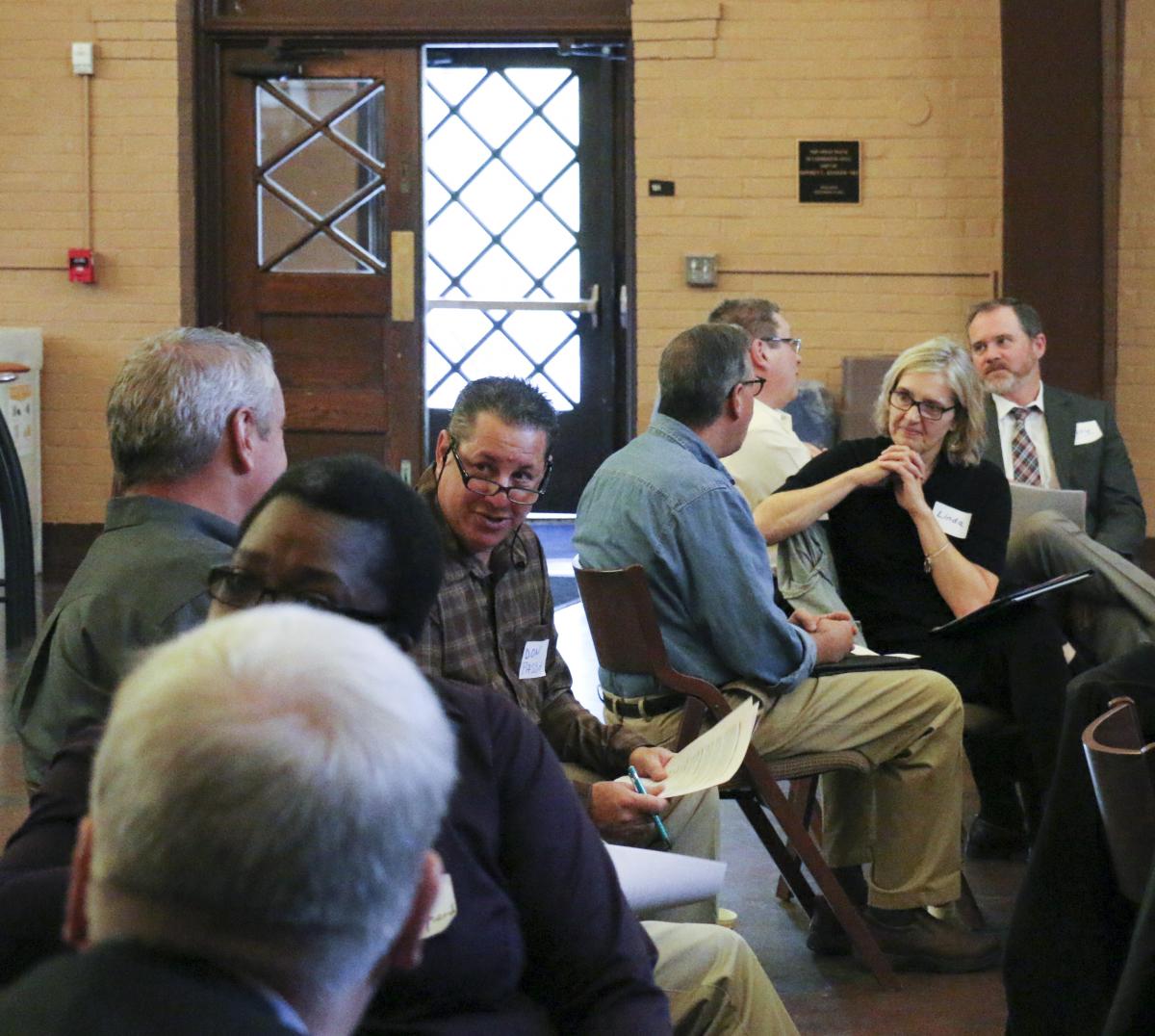The Scene
A search committee has winnowed down a pool of applicants from 60 to 6. Their job now is to choose three finalists to bring to campus for interviews. The committee, made up of a diverse group of employees, reviews the resumes of the six semi-finalists.
During the meeting, comments about the candidates sometimes veer into speculation. Is one of the female candidates serious about her career with so many holes in her resume? Perhaps there’s a position better suited to the candidate who says he’s a veteran with mobility challenges?
As the discussion continues, tensions emerge. The hiring committee chair is pressed for time.
A senior employee advocates for a candidate with a sterling recommendation from a shared mentor. A more junior staff member asserts another candidate, who attended a historically black college, is equally qualified and has even more forward-looking credentials. As the conversation ensues, it becomes racially charged. Time runs out and the final decision is put off for another day.

Is This Lehigh?
No, this scenario didn’t happen at Lehigh. It was part of a recent video and theatrical presentation by the Cornell Interactive Theatre Ensemble (CITE) to bring awareness to the issue of stereotypic biases in the hiring process. Research indicates, however, that this scene could have played out in any organization.
CITE’s interactive theatrical production included a Q&A with the audience by two of the characters from the video (photo, right). After the actors stepped out of character, Program Coordinator and Actor Jumoke (Jum) Warritay shared research about stereotypic bias in the hiring process with participants. Here’s a synopsis of Jum’s presentation.
What Is Stereotypic Bias?
Stereotypic bias takes place in the hiring process when assumptions are made about a candidate based on factors related to their identity as opposed to their qualifications. As with stereotyping in general, this bias often occurs outside of our own awareness.
All of us – regardless of race, gender, ethnicity, sexual orientation, gender identity, or any other self-identification – are prone to these biases. Stereotypes function as “cognitive shortcuts.” Our brain, through years of socialization, and despite our best intentions, can sometimes make a leap for us in order facilitate decision-making.

Lehigh staff broke into small groups to discuss
the topic of stereotypic bias in the hiring process during a recent
Cornell Interactive Theatre Ensemble workshop.
When Does Bias Occur?
Research indicates that bias processes are more extreme when we are tired, rushed, or our brains are otherwise overburdened. In these situations, we are most prone to have an unconscious moment of cognitive shortcutting via stereotypes.
Other triggers for bias can include:
- When the identity of a candidate is rare or underrepresented in the workplace
- When jobs are traditionally identified with a specific gender, race, etc.
- When criteria for selection are vague or ambiguous.
How Can We Disrupt Stereotyping?
There is good news. We can reduce the role that bias plays through conscious efforts to disrupt the use of stereotypes as cognitive shortcuts in the hiring process.
Here are a few strategies and solutions:
- Start before the review of applicants by carefully analyzing your ads and position descriptions for language that could impact the applicant pool
- Devote adequate time to candidate review to avoid rushing through the process (remember that being in a rush is a trigger for cognitive shortcutting)
- Structure diverse hiring committees or groups and allow for maximum participation
- Be transparent about the criteria as you are reviewing candidates and ensure the criteria are the same for all applicants
- Avoid premature ranking of candidates
- Be accountable and prepared to explain your decisions and rankings
- Review applicants’ work rather than solely relying on support materials, such as recommendation letters and cover letters
- Critically analyze supporting materials – there can be hidden bias in recommendations, performance evaluations and other materials.
Ask For Help!
If you are embarking on a hire in your department and have concerns about stereotypic bias in the hiring process, Human Resources can help. The employment team has resources and strategies that can help you keep your hiring process free from bias from the start. Contact Lori Claudio or Aubrie Fenicle for more information.
